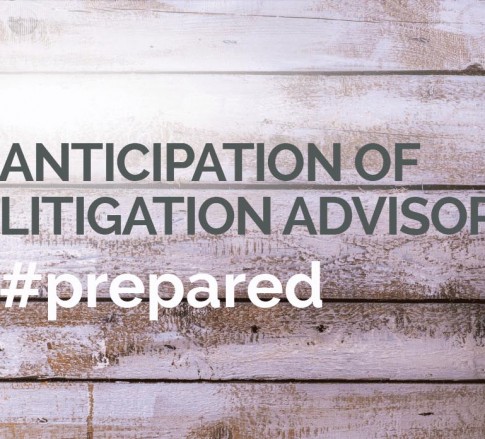HALLOWEEN MAY BE OVER, BUT E-DISCOVERY HORROR STORIES ARE ALWAYS IN SEASON
November 27, 2019
By: Grace E. Hurney
Perhaps there is a lesson to be learned from every case that touches on e-discovery. One powerful lesson on the preservation of evidence and the importance of proper litigation holds comes to us in the e-discovery nightmare of Small v. University Medical Center of Southern Nevada.[1]
In Small, 613 current and former employees of defendant University Medical Center (“UMC”) brought an employment class action alleging that UMC violated the federal Fair Labor Standards Act and Nevada law. Wage and hour cases often involve heavy e-discovery, and this case was no exception. Unfortunately, UMC—blithely unaware of its e-discovery obligations—became both the villain and the victim of its own e-discovery horror story. About a year after the litigation commenced, the parties had made no progress on the discovery of electronically stored information, so a special master was appointed to preside over e-discovery disputes. The special master’s report showed no mercy for UMC’s apparent naivety. The special master found that “[t]he level of intentional destruction of evidence by UMC “shocks the conscience.”[2] The special master further observed that:
- UMC had no litigation hold policy or procedures in place (and did not issue an adequate litigation hold to its custodians in response to the lawsuit until nine months after suit was filed);
- UMC failed to conduct timely interviews of custodians to identify key repositories of electronically stored evidence;
- The first effort by UMC to preserve ESI sources was in April 2013, and mobile device data was not preserved until April 2014;
- Because of the failure to conduct timely custodian interviews, sources of ESI were not preserved until 600 days after the lawsuit was filed, leading to incomplete production;
- Sources of ESI were not preserved, such as computers used by custodians;
- UMC’s executives failed to take responsibility to ensure the preservation of evidence by not instituting a litigation hold, or to take action to ensure preservation of documents; and
- UMC’s CEO learned of the preservation obligation in passing in a hallway.
In a 123-page opinion issued four years after the special master’s report, the District Court laid out UMC’s e-discovery crimes in chilling detail. The Court agreed with the special master’s findings, holding that UMC failed to take reasonable efforts to identify, preserve, collect, and produce relevant evidence.[3] The District Court further held that UMC’s “preservation efforts were insufficient” and that its “collection and production were deeply flawed.”[4] To remediate the harm to the plaintiffs due to UMC’s failure to preserve electronically stored information the Court issued sanctions against UMC—including an adverse inference instruction.[5]
Like most horror stories, UMC’s e-discovery downfall was the consequence of its own poor decisions. UMC failed to conduct effective interviews of its employees to determine the identities of the custodians of potentially relevant information. Instead, custodians possessing relevant information were not interviewed until well over a year after the litigation began (after the special master was appointed). Even after the interviews were conducted, the interviews were deemed insufficient by both the special master and the district court.
Takeaway: Don’t let this horror story happen to you. Be prepared with a litigation response plan. A litigation response plan provides clear procedures to follow, ensuring that key personnel are made aware of the litigation, a litigation hold is promptly issued, key custodians are immediately identified and interviewed, and potentially responsive evidence is preserved from all data sources, including from mobile devices. Early collaboration with IT personnel is critical to prevent automatic deletion of relevant data. Key employees (including executives) must understand their duty to preserve and the consequences of the failure to preserve evidence. Creating and implementing a litigation response plan far in advance of litigation positions companies to seamlessly comply with their discovery obligations company-wide, including preventing spoliation of evidence.
Author: Grace Hurney, Associate, Labor & Employment
© November 2019 Jackson Kelly PLLC
[1] 13-cv-0298-APG-PAL, 2018 WL 3795238 (D. Nev. Aug. 9, 2018).
[2] Small v. Univ. Med. Ctr. of S. Nevada, No. 2:13-CV-00298-APG, 2014 WL 4079507, at *36 (D. Nev. Aug. 18, 2014).
[3] 2018 WL 3795238, at *5.
[4] Id. at *18.
[5] Id. at *65.



